India Basin is the easternmost neighborhood of San Francisco, California. The name India Basin first appeared on a map in 1868, but theories as to its origin remain murky. The best guess is that India Basin is named for the ships from the India Rice Mill Company, which docked there in the 19th century. A more creative explanation has it that it was so named because water from the nearby spring would stay fresh until a ship reached India.
While it is assumed that the sunny weather, Bay access, and nearby fresh-water spring made India Basin an ideal location for native encampments, no specific tribal evidence has been preserved. Part of the Mexican land grant made to Jose Cornelio de Bernal in 1839, much of the peninsula and tidal flats around India Basin remained uninhabited until the 1860s when proximity to a booming San Francisco made the area a strategic location.
Butchertown
As San Francisco grew after the Gold Rush, the activities of slaughtering animals were ordered out of the more populated areas north of Market Street. In 1868 a group of butchers purchased land between Islais Creek and India Basin, in what would come to be called Butchertown. By 1877 all 18 of San Francisco’s slaughterhouses had located to the community bounded by First Avenue South to the north (now Arthur Avenue), I Street to the east (now Ingalls Street), Railroad Avenue to the west (now Third Street), and Bayshore to the south.
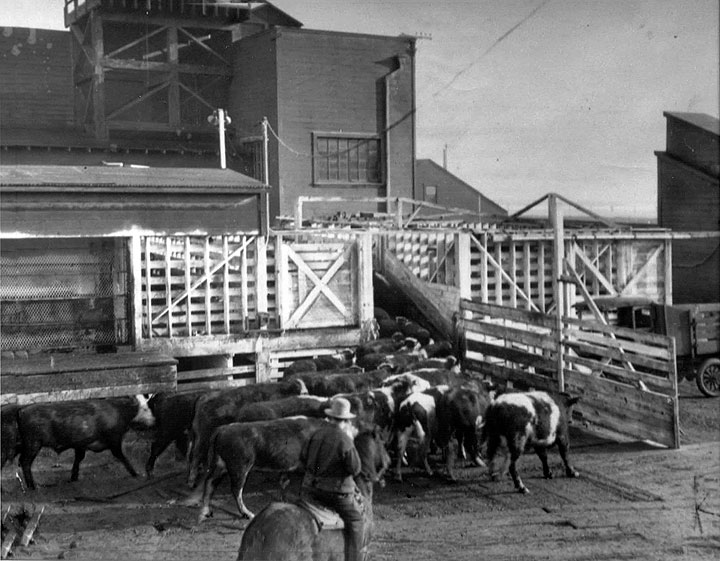
Third and Evans San Francisco 1921 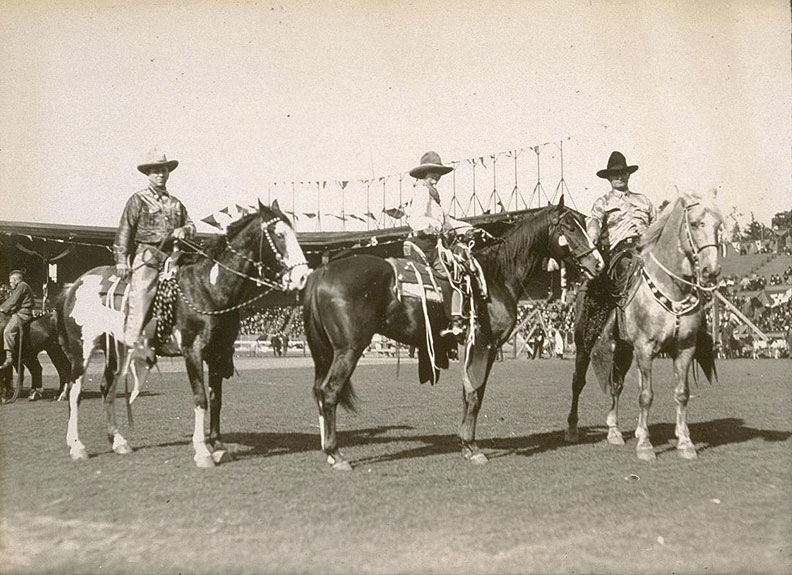
Boys from Butchertown at the Rodeo
Cowboys herding cattle into slaughterhouses was a common site at Third and Evans from the 1870s to the 1970s.
Transportation via the railroad that ran along Railroad Avenue (now Third Street) and by the docks at India Basin and South Basin brought cows and sheep to Butchertown from grazing areas on the Peninsula and East Bay and then product from Butchertown to customers downtown and throughout the region. A number of businesses associated with slaughterhouses developed in the area including tanneries processing hides, saddlers making leather goods, wool pulleries, glue factories, and tallow houses producing candles. At one point over 3,500 people worked as butchers, cowboys, and in associated Butchertown businesses near India Basin. According to Found SF, the relative isolation from the rest of San Francisco and mixed industrial and agrarian workforce led to a ethnically diverse, religiously mixed, self-sufficient community unlike most of the rest of the city at the time. The main ethnic groups in Butchertown were French, Italian, Maltese, and Irish Americans. Unlike other sections of San Francisco, different ethnic groups lived side by side with little geographical concentration in housing and without much conflict.
Butcher businesses thrived for many years, fading as the community became more residential after the 1906 earthquake and ending when the area was “redeveloped” beginning in the 1970s. The last Butchertown slaughterhouse closed in 1971.
Boat Building and the Shipwrights’ Cottage
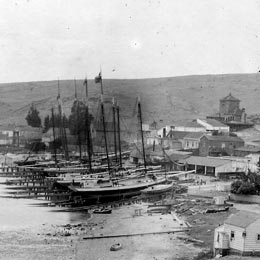
India Basin Shoreline with Albion Castle in background, 1907 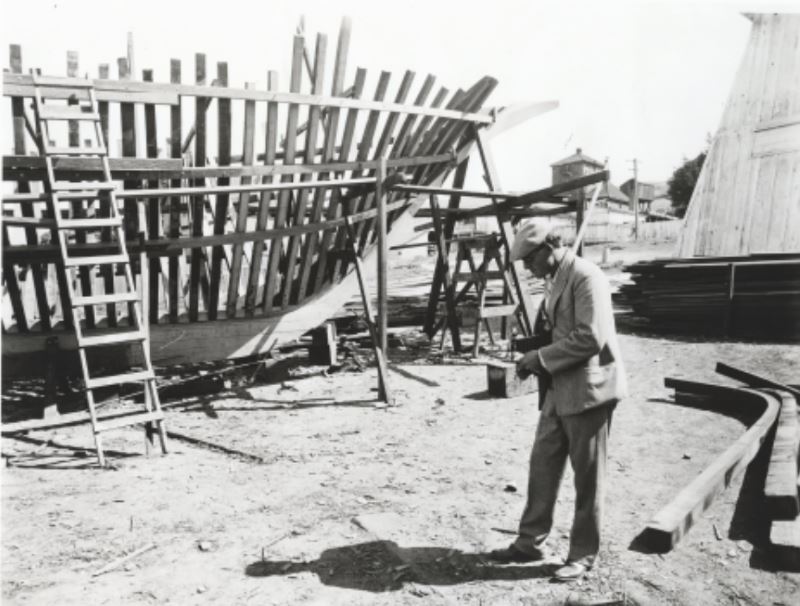
Jack London and Snark during building at 900 Innes, 1907 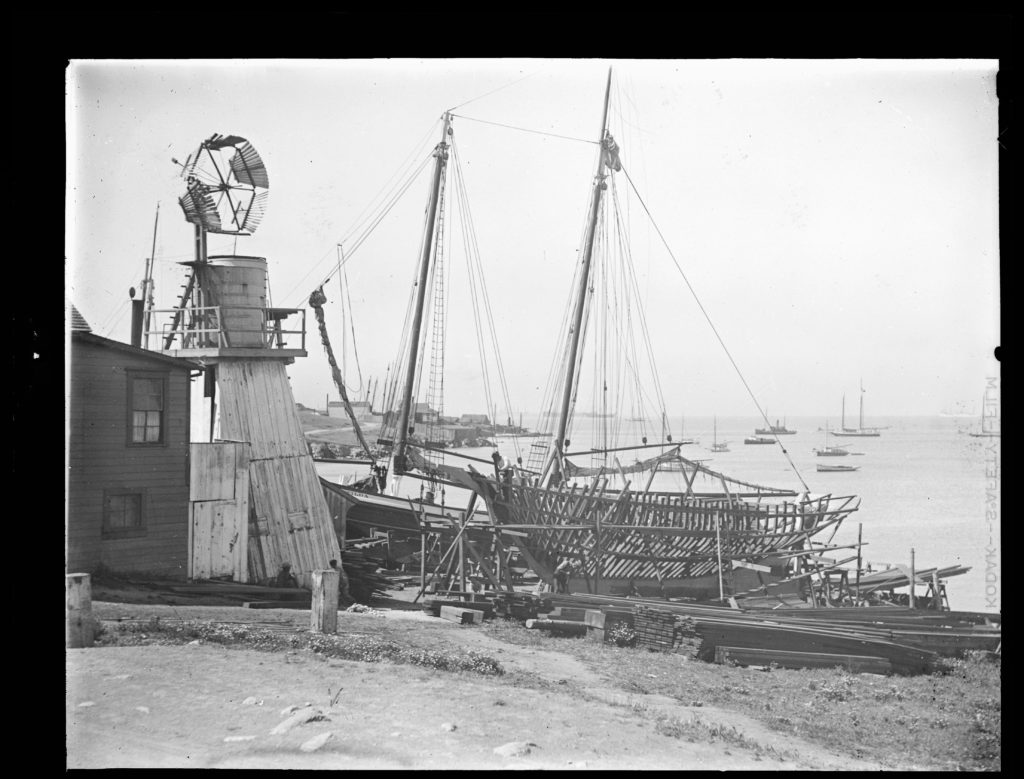
900 Innes boatyard with water tower, 1907 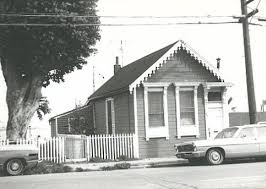
Shipwright’s Cottage, 1960s 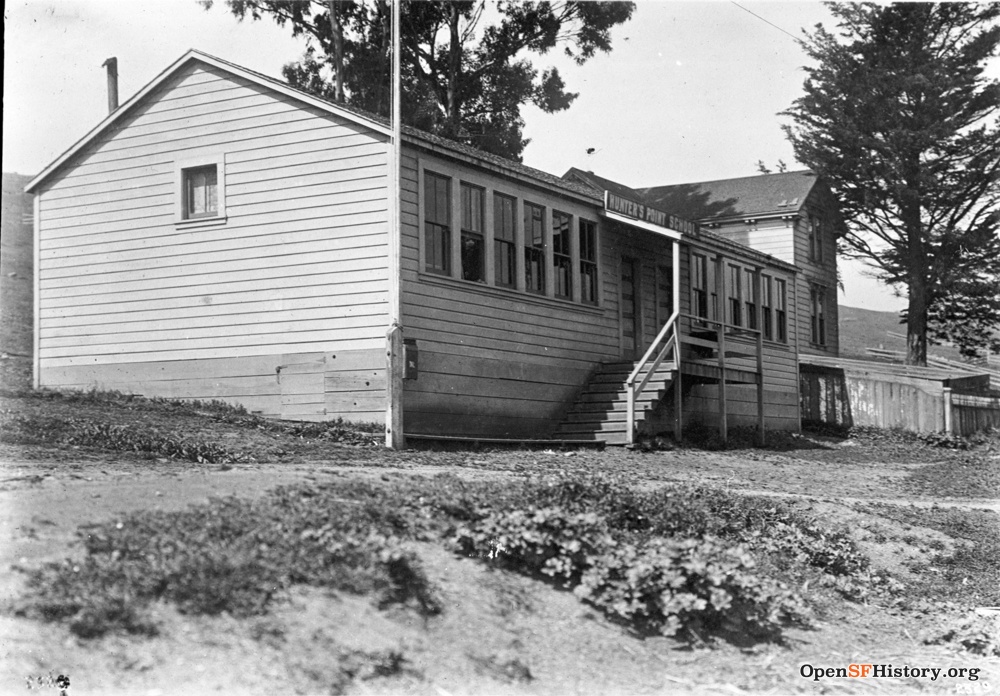
Hunters Point School, Innes at Griffith, 1920 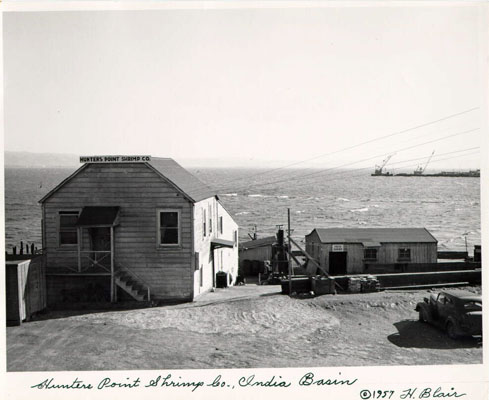
Shrimp Company, Hudson near Griffith
Construction of the California Dry Dock Company at the southern tip of India Basin in 1866 began the growth of maritime manufacturing and commerce. Around the same time, San Francisco’s bay scow schooner building industry began relocating to India Basin from Potrero Point and Islais Creek. Attracted by the availability of inexpensive land with deep water access, a dozen boat builders lined India Basin with boatyards alongside several Chinese shrimp camps.
In the days before trucks and bridges, shallow-draft wooden boats called scow schooners built at India Basin were an important part of California’s economy and the centerpiece of union boat building called shipwrighting. Traveling around the Bay and up the Sacramento and San Joaquin rivers, hundreds of these versatile boats brought manufactured goods to people in the Central Valley and returned with hay for the City’s horses and crops for shipping around the world. At that time, dozens of families lived and worked in this thriving maritime community making beer at nearby Albion Brewery, fishing, shrimping, and boat building. Among boats built here were the scow schooner Alma now at the National Maritime Historical Park, Jack London’s adventure boat the Snark, and WWII Victory launches.
Two homes remain from India Basin’s boat-building glory days. The Watchhouse at 911 Innes was built by William F. Stone in 1874 and has been a private family home throughout its history. The Shipwright’s Cottage at 900 Innes was built circa 1875 by carpenter John Johnson Dircks, with design influenced by Italianate and carpenter Gothic architectural styles. It originally featured intricate trim and was flanked by a windmill and water storage tank. Both homes were featured in the 2019 film The Last Black Man in San Francisco.
Over the years boat-building families the Dircks, Jorgensons, and Siemers resided in the Shipwright’s Cottage and ran the 900 Innes boatyard. From 1926 to 1961 it was the office of the adjacent Anderson & Cristofani Boatyard. After changing hands several times, in the 1990s the boatyard owners were convicted of the federal crime of illegally dredging India Basin and the boatyard closed.
During two decades of neglect by absentee owners, the historic boatyard served as a homeless encampment, illegal drug lab, construction storage yard, and showpiece of neighborhood blight. Through it all, the Shipwright’s Cottage, several outbuildings, the marine ways, and docks survived. Most amazingly, the boatyard features perhaps the only natural Bay shoreline remaining in the city.
Thanks to advocacy by the India Basin Neighborhood Association and others, the Shipwright’s Cottage was named San Francisco Landmark #250 in 2008 and in 2014 the City and County of San Francisco acquired the cottage and boatyard via the voter-approved open space fund. Once environmental cleanup and rebuild is complete, the Historic Boatyard will become a Recreation and Park Department education and recreation facility.
The Albion Castle
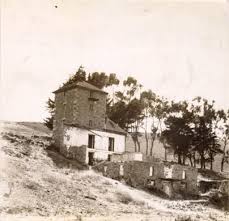
Albion Castle, 1907 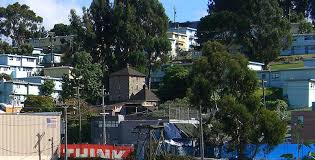
Albion Castle, 2007
In 1870, John Hamlin Burnell purchased property adjacent to India Basin to obtain rights to the natural springs that run underneath. He built the Albion Ale and Porter Brewing Company in a traditional Norman style using stones that may have been recycled from ships’ ballast or may have been quarried locally. That building, known as the Albion Castle, 881 Innes Avenue, is San Francisco Landmark #60. Later he built the Albion Water Co. next door to sell bottled spring water.
After the death of John Burnell in 1890, his widow, brother and surviving nephews ran the brewery until 1919 at the time of Mrs. Burnell’s death. With her death and with the advent of prohibition, the brewery ceased operation altogether. The site continued to deteriorate until 1938 when Adrien Voisin, a sculptor, bought the property. Using old photographs and drawings, Voisin restored the main building’s stonework to its original quality and used the premises as a residence and studio. Later, the S.F. Mountain Springs Water Co. purchased the water rights from Voisin and in 1964 the company purchased the brewery itself, allowing Mr. Voisin to retain life tenancy. That company, renamed the Albion Water Company, survived into the 1990s. The Albion Castle became a private home, and is currently an event space.
The Shipyard
The story to come.
The Power Plant
The story to come.
Mid-20th Century Redevelopment
The story to come.
A 21st Century Recreation Destination
Today India Basin is one of the few natural areas within San Francisco adjacent to the Bay. Because of that, it is a unique natural resource with recreational values that include a segment of the Bay Trail; shoreline access to the Bay for fishing, kayaking, and other water-dependent recreation; one of only a few tidal salt marsh wetlands in the City; suitable habitat for a variety of shore birds and foraging habitat for raptors; and stunning views of the San Francisco Bay from downtown across the East Bay to Mt. Diablo.
In 2014 San Francisco developer Build, Inc purchased about 15 acres of mainly open lots on the south edge of India Basin. Together with the India Basin Neighborhood Association (IBNA) and the San Francisco Recreation & Parks Department (RPD), Build, Inc has embarked on a long journey to transform a semi-wild former gravel yard into an urban village. IBNA asked for a pedestrian-first, human-scaled, bicycle-friendly, residential village where neighborhood amenities are within a short walk following the goals of our 2010 Community Vision. Much more than a development venture or park expansion, this innovative Public-Private Partnership advances the City’s and community’s aspirations for new housing and jobs, sea-level rise shoreline adaptation, enhanced waterfront access, expanded recreation space, public art and vital community services.
Generally called the 700 Innes project, Build, Inc has received planning approval for a mixed-use development to include a mixed-use urban village made up of 1,575 residential units (over 30% affordable), approximately 200,000 square feet of commercial space, a public library, a child care center, approximately 15.5 acres of publicly accessible open space connecting to existing park spaces, and up to 1,800 parking spaces. Running through the development is a Class 1 Bike Path connecting to the Blue Greenway and Bay Trail networks.
